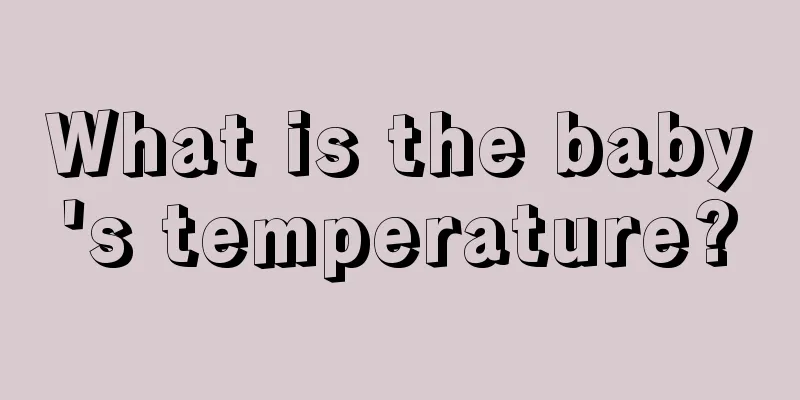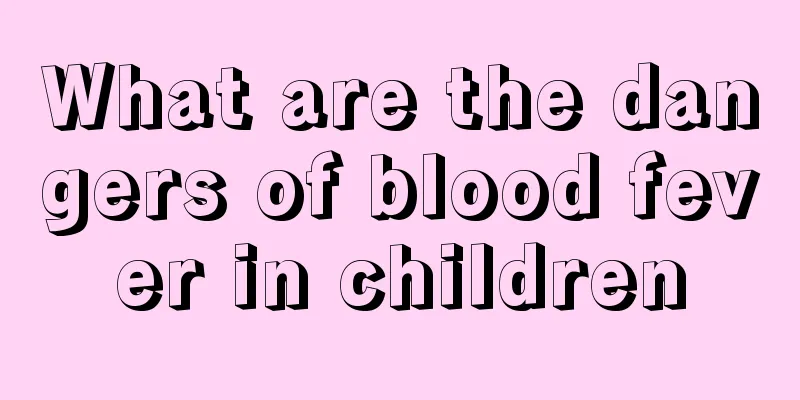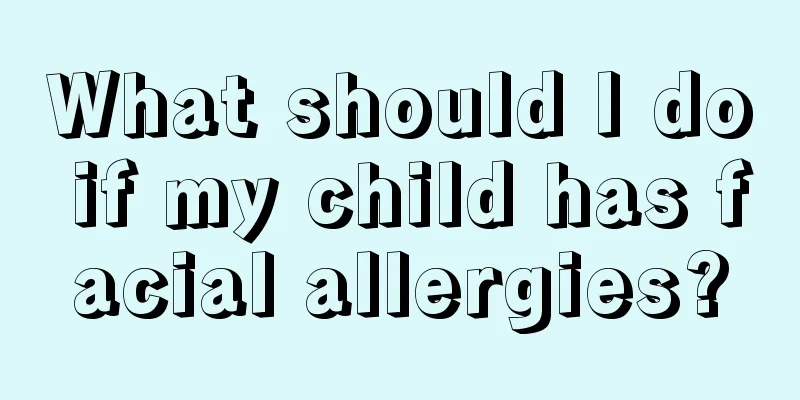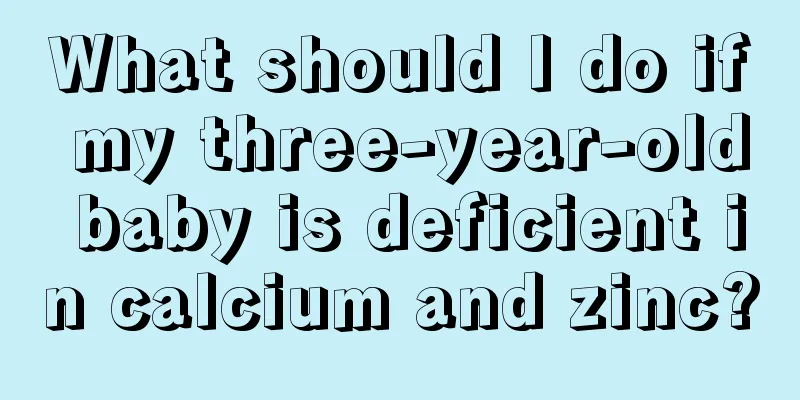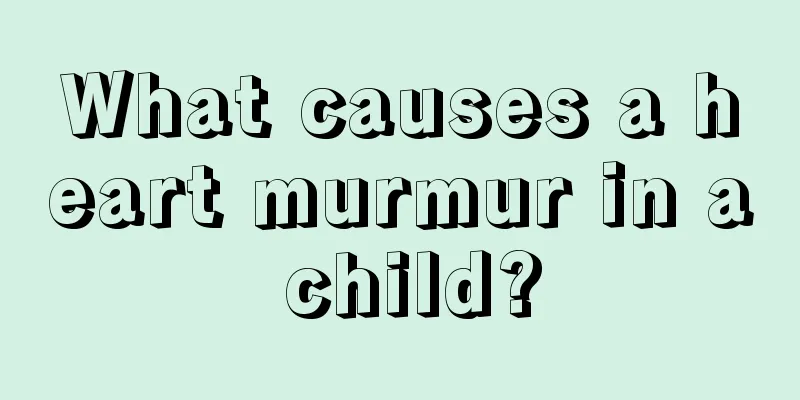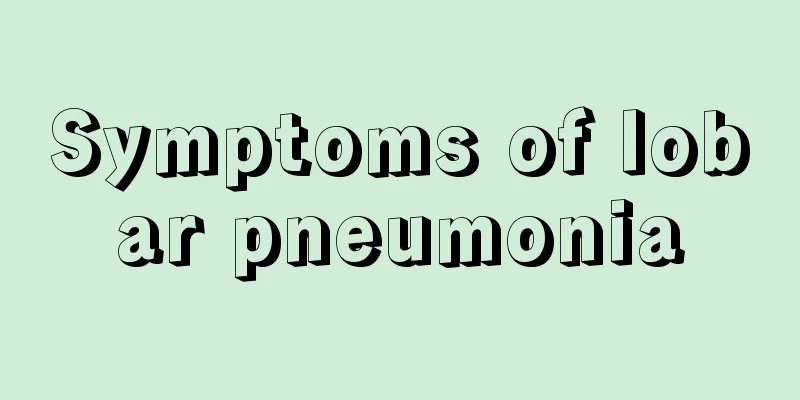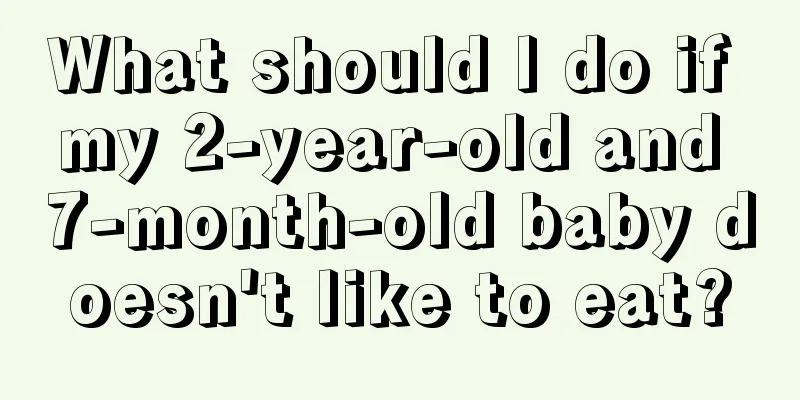My baby has a fever but his hands and feet are cold, what's going on?
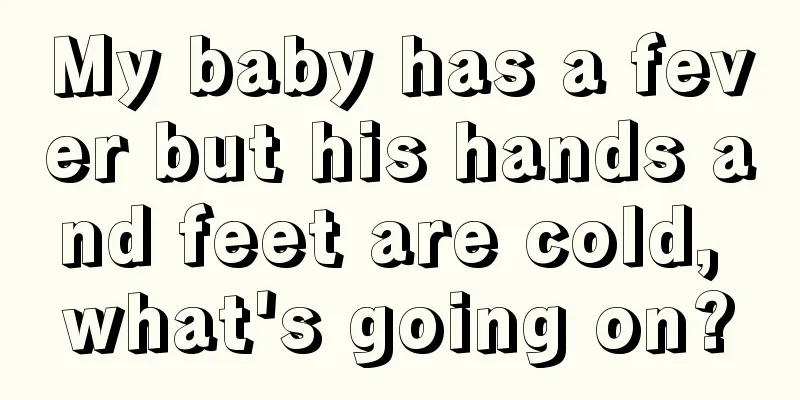
|
Since the baby's physical development is not yet complete, the body's resistance is relatively low. Although the mother will take good care of the baby, it is inevitable that the baby will get sick. Although it is normal for the baby to get sick, it will make the mother feel particularly anxious. When a baby has a cold and has a high fever, he or she should be sent to the hospital for treatment in time. My baby has a fever and his hands and feet are cold. Why?The phenomenon of babies having fever and cold hands and feet is often seen clinically. The child has a high fever but cold hands and feet. After the body temperature gradually drops, the hands and feet slowly become warm again. In fact, this is a phenomenon of false cold and real heat. Although the child's hands and feet are cold, his internal organs are in a feverish state. This is especially common in infants under 3 years old. Children's limbs contain less blood than their internal organs, and the blood supply to their limbs is insufficient, so they are more likely to feel cold than adults. In addition, the development of children's nervous system is not yet complete, and the autonomic nervous system responsible for managing vasodilation and contraction is prone to disorder, resulting in the small blood vessels at the ends of the limbs being in a spasmodic contraction state and becoming cold when high fever first occurs.
Children with a cold usually only need oral medication when the temperature is above 39 degrees. If the temperature is below 39 degrees, physical therapy is usually sufficient. Because the human body has its own immune regulation, body temperature will rise when fighting bacteria and viruses. Pay attention to your body temperature at night, because the human body's immunity is particularly low at night, so it is easy to have a fever, while the temperature drops during the day. The situation of babies having fever but cold hands and feet is often seen in clinical practice. The child has a high fever but cold hands and feet. After the body temperature gradually drops, the hands and feet slowly become warm again. In fact, this is a phenomenon of false cold and true heat. Although the child's hands and feet are cold, his internal organs are in a hot state. This is especially common in infants under 3 years old. This phenomenon of false cold and real heat is mainly because babies (especially infants and young children) have less blood in their limbs than in their internal organs. Due to insufficient blood supply to their limbs, they are more likely to feel cold than adults. In addition, the baby's nervous system is not yet fully developed, and the autonomic nerves responsible for managing vasodilation and contraction are prone to disorder, causing the small blood vessels at the ends of the limbs to be in a spasmodic contraction state and become cold when the high fever first occurs. Many parents do not understand this situation. Once they find their baby's limbs are cold, they mistakenly think that the baby has caught a cold and is afraid of the cold, so they immediately wrap the baby tightly. As a result, the baby's body temperature cannot be dissipated in time and keeps rising, and even high fever and convulsions occur. If the body temperature exceeds 38.5 degrees, do not reduce the fever too quickly when the child has a fever. Many parents are eager to reduce their children's fever because they are worried that the fever will damage their children's brains and affect their intelligence. In fact, a simple fever will not affect the intellectual development of children. If the baby has other discomforts, it is recommended to see a doctor to see if there is any inflammation or something, and it would be better to prescribe some medicine for the baby to take.
1. Use antipyretics correctly. If the child's body temperature does not exceed 38.5 degrees, antipyretic drugs are generally not needed, but changes in body temperature should be closely monitored. If the child's body temperature reaches 39 degrees, in order to prevent heat cramps, under the guidance of a doctor, choose appropriate antipyretics, or use physical cooling, such as using 75% alcohol or warm water to wipe the armpits, groin, palms, soles of the feet and other areas with rich blood flow, which can also help reduce fever, and the effect is very good, and children are willing to accept it. But you must be careful to keep the child covered at all times while wiping to prevent him from catching cold. 2. When having a fever, you should take off your clothes and should not try to cover up the sweat to lower the body temperature, because excessive sweat loss will make the child feel tired and weak. Traditional Chinese medicine believes that the loss of a large amount of body fluid is actually beneficial to the child's recovery. 3. Keep the indoor air fresh, open windows regularly for ventilation, and keep the room temperature not too high, preferably between 18 and 20 OC. At the same time, do not let drafts blow directly on the child. 4. If the child's fever still persists, he or she should cooperate with the doctor and undergo other examinations to help find the cause of the disease as soon as possible and provide targeted symptomatic treatment. 5. The diet should be light, easy to digest and absorb, and semi-liquid food is preferred, such as nutritious porridge and egg noodle soup. Eat more vegetables and fruits, especially fresh fruits and vegetables containing vitamin C. 6. Drink more water and eat liquid food, such as watermelon juice, to ensure that the body has sufficient energy and water. |
<<: The white of the child's eye has red bloodshot
>>: Why are baby's feet shaking?
Recommend
White spots in newborn's mouth
Usually, we get oral ulcers when our mouths are i...
What bed is good for children?
The bed is the thing that people spend the longes...
Gastroesophageal reflux cough in children
The stomach is an important digestive organ in th...
How to cure prickly heat in children?
Children like to play together and sometimes they...
Physical standards and development rules for two-year-old and five-month-old babies
The growth of children is a concern of every fami...
What should I do if my child has milk curds in his poop?
Since the baby is still young and cannot speak, t...
Will babies have constipation during the confinement period?
Holding the baby's stomach in check refers to...
Best treatment and care for newborn baby eczema
After birth, newborns are not yet well adapted to...
Things to note for children with obstructive hydrocephalus
Since there are many different situations, young ...
What are the common symptoms of fever in infants and young children?
Children's colds are usually accompanied by s...
What's wrong with a little boy's bulging penis when he pees?
When parents are helping their baby to urinate, i...
What to do if the child's anus is red and swollen
When children are young, their skin is very tende...
The difference between baby allergies and eczema
Eczema and allergies are very common diseases in ...
Why does my baby often scratch his ears?
Every move of the baby makes parents very happy, ...
How to soothe a newborn to sleep?
Newborns are too young to speak, so they can only...
